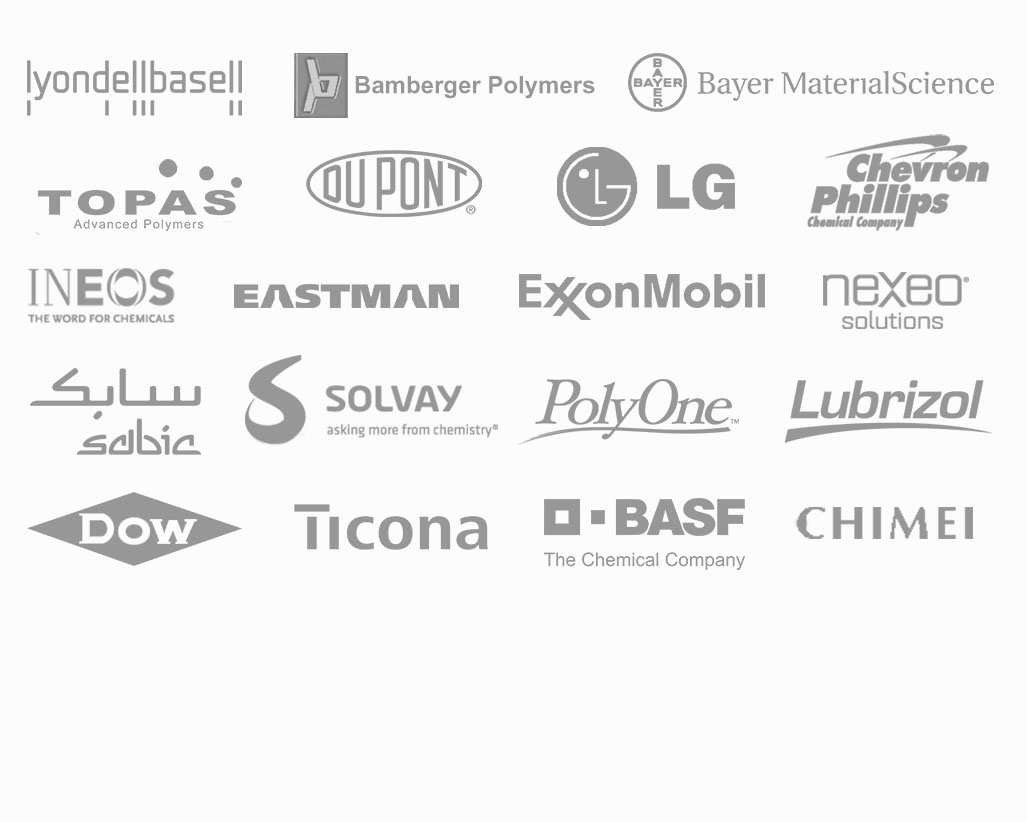Application Use
Market Segments
Modified Plastics (MPI) custom designed compounds are value added components in countless end –use applications in servicing a variety of industries including:- Aerospace
- Agricultural
- Appliances
- Automotive
- Bio-Degradable
- Construction
- Consumer Goods
- Cosmetics
- Disposable Medical
- Electronics
- Energy
- Firearms
- Industrial
- Medical
- Military
- Packaging
- Pool & Spa
- Recreational
- Sheet & Rod Extrusion
- Sporting Goods
Our expertise in every aspect of material development is supported by a dedicated technical staff capable of assisting through the development process, material selection, supplying finished prototype and concept samples to our valued customers. We specialize in the design and engineering of high performance resins and additive systems that meet or exceed our customer expectations.
Material Segments
Amorphous Polymers
Polymer chains with branches or irregular pendant groups cannot pack together regularly enough to form crystals. These polymers are said to be amorphous.
Amorphous regions of a polymer are made up of a randomly coiled and entangled chains. They have been compared to a bucket containing a large number of entangled worms – each one 20-feet long and of 1/4-inch thickness. The worms are so tangled that an entire worm cannot slide past the others, but small portions of the worms can twist around within the mass.
Amorphous polymers are softer, have lower melting points, and are penetrated more by solvents than are their crystalline counterparts.
More about Amorphous PolymersCrystalline Polymers
Highly crystalline polymers are rigid, high melting, and less affected by solvent penetration. Crystallinity makes a polymers strong, but also lowers their impact resistance. As an example, samples of polyethylene prepared under high pressure (5000 atm) have high crystallinities (95 – 99%) but are extremely brittle.
Small molecules and ions form a three-dimensional lattice with an extended regular structure that makes large crystals possible.
We usually describe such lattices with a unit cell – the smallest repeating unit in the lattice . In the case of NaCl, the unit cell is said to be face-centered cubic.
Polymer molecules are very large so it might seem that they could not pack together regularly and form a crystal. It now is known that regular polymers may form lamellar (plate-like) crystals with a thickness of 10 to 20 nm in which the parallel chains are perpendicular to the face of the crystals.
More about Crystalline PolymersElastomeric Polymers
An elastomer is a polymer with the property of viscoelasticity (colloquially “elasticity”), generally having notably low Young’s modulus and high yield strain compared with other materials. The term, which is derived from elastic polymer, is often used interchangeably with the term rubber, although the latter is preferred when referring to vulcanisates. Each of the monomers which link to form the polymer is usually made of carbon, hydrogen, oxygen and/or silicon. Elastomers are amorphous polymers existing above their glass transition temperature, so that considerable segmental motion is possible. At ambient temperatures rubbers are thus relatively soft (E~3MPa) and deformable. Their primary uses are for seals, adhesives and molded flexible parts.
More about Elastomeric Polymers

